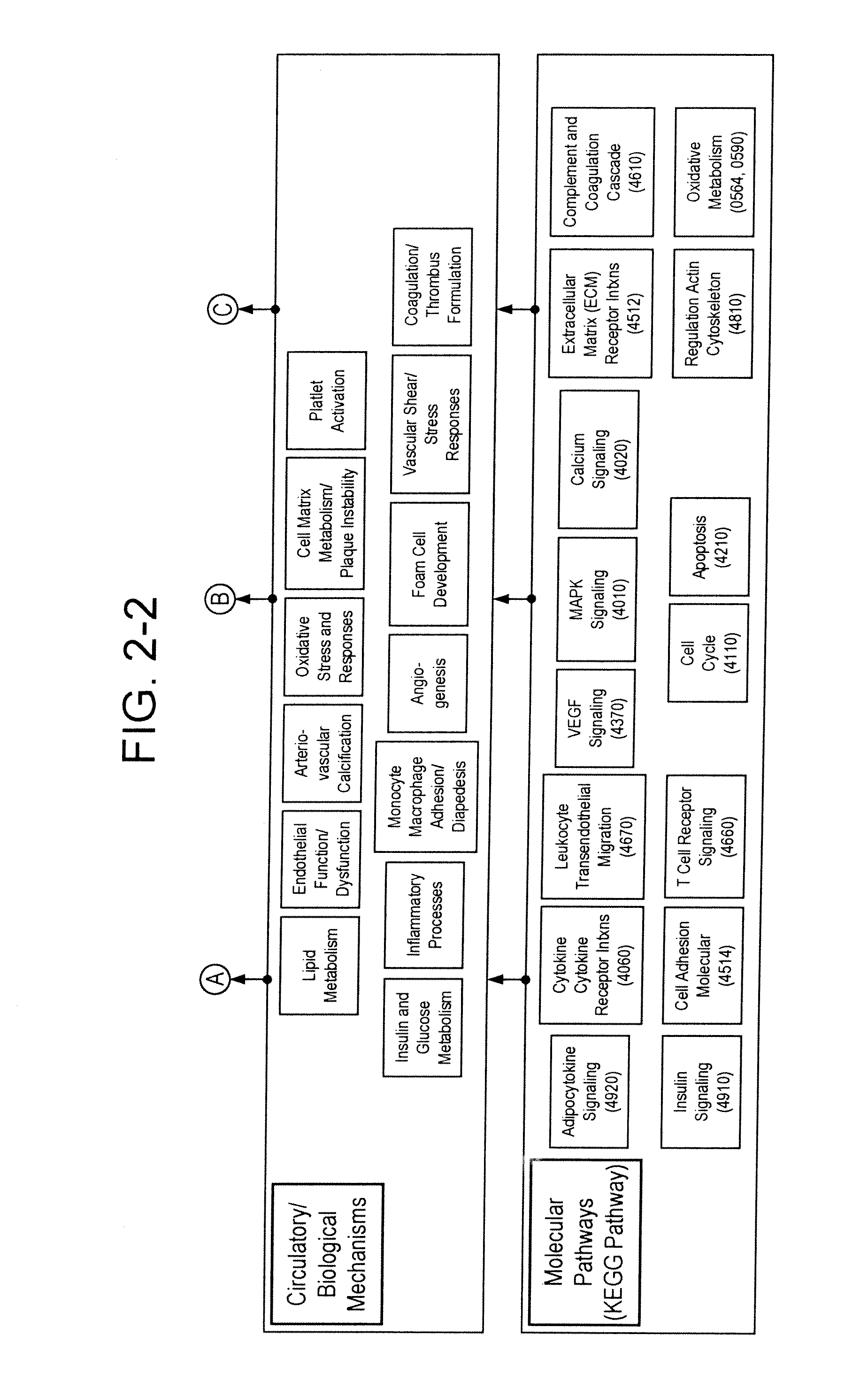Markers Associate with Arteriovascular Events and Methods of Use Thereof
a technology of arteriovascular events and markers, applied in the direction of instruments, ict adaptation, material analysis, etc., can solve the problems of difficult for clinicians to effectively implement and perform within an active clinical environment, and the approach is only moderately accurate in predicting the short and long-term risk of manifesting a major arteriovascular even
- Summary
- Abstract
- Description
- Claims
- Application Information
AI Technical Summary
Benefits of technology
Problems solved by technology
Method used
Image
Examples
example 1
[0286]Example 1 presents the practice of the invention in a longitudinal case-control study design. The starting sample was a large population based longitudinal study following approximately 6,300 patients over a minimum of five years to date. In the initial smaller subset study and analysis presented here, patients were first selected based on no prior history of acute arteriovascular events at baseline study entry, and risk enriched to an estimated applicable clinical population most likely to be tested by an ATERIORISKMARKER combination panel by applying an “entry” baseline requirement of age greater than or equal to 39 years old and body mass index of greater than or equal to 25.
[0287]This population was then filtered to remove those who subsequently experienced an arteriovascular event during the study, such events including a broad definition of myocardial infarction, unstable angina, revascularization (such as thrombolysis, PCI or CABG), or ischemic stroke (hemorrhagic strok...
example 2
[0311]Similar analysis was performed for the populations of Example 2, which included stroke in the Case arm, as was summarized in FIG. 3.
[0312]FIG. 19 is a table providing information on the inputs used under different ARTERIORISKMARKER model types and selection techniques, with resulting “best” models given model design and constraints, within both of the different case populations of Example 1 (excluding stroke from the Case arm) and Example 2 (including stroke in the Case arm). Of particular note is the consistency of selection of certain markers, which are the Core Markers of the invention, across three or more model types, multiple model constraints, and marker selection techniques.
[0313]Differences in marker selection using the same models and marker selection criteria across the different cohorts excluding versus including stroke converters, and amongst the markers when restricted to blood-bourne markers only versus allowed to select all variables, may demonstrate both the s...
PUM
 Login to View More
Login to View More Abstract
Description
Claims
Application Information
 Login to View More
Login to View More - R&D
- Intellectual Property
- Life Sciences
- Materials
- Tech Scout
- Unparalleled Data Quality
- Higher Quality Content
- 60% Fewer Hallucinations
Browse by: Latest US Patents, China's latest patents, Technical Efficacy Thesaurus, Application Domain, Technology Topic, Popular Technical Reports.
© 2025 PatSnap. All rights reserved.Legal|Privacy policy|Modern Slavery Act Transparency Statement|Sitemap|About US| Contact US: help@patsnap.com



